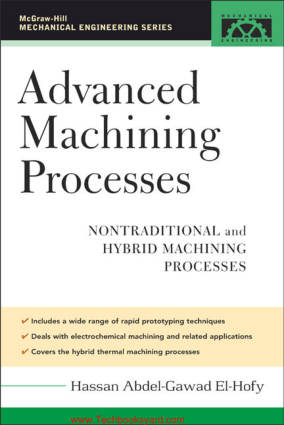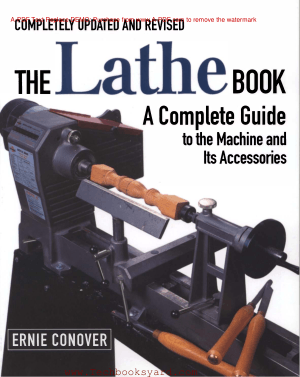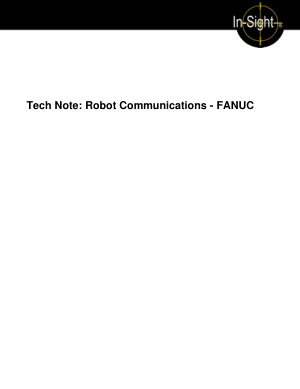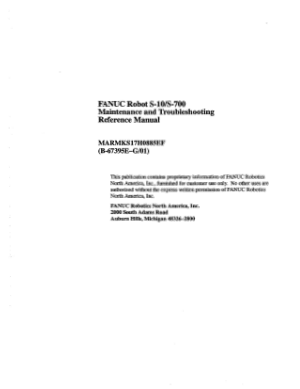Contents
Preface xi
Acknowledgments xvii
List of Acronyms xix
List of Symbols xxiii
Chapter 1. Material Removal Processes 1
1.1 Introduction 1
1.2 History of Machining 1
1.3 Traditional Machining 5
1.3.1 Machining by cutting 5
1.3.2 Machining by abrasion 6
1.4 Nontraditional Machining 8
1.4.1 Single-action nontraditional machining 9
1.4.2 Hybrid machining 10
References 13
Chapter 2. Mechanical Processes 15
2.1 Ultrasonic Machining 15
2.1.1 Introduction 15
2.1.2 The machining system 15
2.1.3 Material removal process 22
2.1.4 Factors affecting material removal rate 24
2.1.5 Dimensional accuracy and surface quality 26
2.1.6 Applications 28
2.2 Water Jet Machining 32
2.2.1 Introduction 32
2.2.2 The machining system 32
2.2.3 Process parameters 34
2.2.4 Applications 35
2.2.5 Advantages and disadvantages of WJM 38
2.3 Abrasive Jet Machining 39
2.3.1 Introduction 39
2.3.2 Machining system 39
2.3.3 Material removal rate 40
2.3.4 Applications 42
2.3.5 Advantages and limitations of AJM 42
2.4 Abrasive Water Jet Machining 43
2.4.1 Introduction 43
2.4.2 The machining system 44
2.4.3 Process capabilities 45
2.5 Ice Jet Machining 46
2.5.1 Introduction 46
2.5.2 Process description 46
2.6 Magnetic Abrasive Finishing 48
2.6.1 Introduction 48
2.6.2 The machining system 48
2.6.3 Material removal process 49
2.6.4 Applications 50
References 52
Chapter 3. Chemical Processes 55
3.1 Chemical Milling 55
3.1.1 Introduction 55
3.1.2 Tooling for CHM 57
3.1.3 Process parameters 61
3.1.4 Material removal rate 61
3.1.5 Accuracy and surface finish 62
3.1.6 Advantages 63
3.1.7 Limitations 64
3.1.8 Applications 64
3.2 Photochemical Milling 66
3.2.1 Introduction 66
3.2.2 Process description 66
3.2.3 Applications 67
3.2.4 Advantages 68
3.3 Electropolishing 70
3.3.1 Introduction 70
3.3.2 Process parameters 73
3.3.3 Applications 73
3.3.4 Process limitations 74
References 75
Chapter 4. Electrochemical Processes 77
4.1 Electrochemical Machining 77
4.1.1 Introduction 77
4.1.2 Principles of electrolysis 77
4.1.3 Theory of ECM 78
4.1.4 ECM equipment 79
4.1.5 Basic working principles 84
4.1.6 Process characteristics 87
4.1.7 Process control 95
4.1.8 Applications 97
4.1.9 Micro-ECM 98
4.1.10 Advantages and disadvantages of ECM 98
4.1.11 Environmental impacts 99
4.2 Electrochemical Drilling 100
4.3 Shaped Tube Electrolytic Machining 102
4.4 Electrostream (Capillary) Drilling 105
4.5 Electrochemical Jet Drilling 108
4.6 Electrochemical Deburring 109
References 112
Chapter 5. Thermal Processes 115
5.1 Electrodischarge Machining 115
5.1.1 Introduction 115
5.1.2 Mechanism of material removal 115
5.1.3 The machining system 120
5.1.4 Material removal rates 125
5.1.5 Surface integrity 127
5.1.6 Heat-affected zone 129
5.1.7 Applications 130
5.1.8 Process control 137
5.1.9 EDM automation 138
5.1.10 Environmental impact 139
5.2 Laser Beam Machining 140
5.2.1 Introduction 140
5.2.2 Material removal mechanism 141
5.2.3 Applications 144
5.2.4 Advantages and limitations 156
5.3 Electron Beam Machining 157
5.3.1 Introduction 157
5.3.2 Basic equipment and removal mechanism 157
5.3.3 Applications 163
5.3.4 Advantages and disadvantages 165
5.4 Plasma Beam Machining 166
5.4.1 Introduction 166
5.4.2 Machining systems 166
5.4.3 Material removal rate 169
5.4.4 Accuracy and surface quality 169
5.4.5 Applications 171
5.4.6 Advantages and disadvantages 172
5.5 Ion Beam Machining 172
5.5.1 Introduction 172
5.5.2 Material removal rate 173
5.5.3 Accuracy and surface effects 175
5.5.4 Applications 176
References 177
Chapter 6. Hybrid Electrochemical Processes 181
6.1 Introduction 181
6.2 Electrochemical Grinding 182
6.2.1 Introduction 182
6.2.2 Material removal rate 183
6.2.3 Accuracy and surface quality 187
6.2.4 Applications 188
6.2.5 Advantages and disadvantages 188
6.3 Electrochemical Honing 189
6.3.1 Introduction 189
6.3.2 Process characteristics 189
6.3.3 Applications 191
6.4 Electrochemical Superfinishing 192
6.4.1 Introduction 192
6.4.2 Material removal process 193
6.4.3 Process accuracy 195
6.5 Electrochemical Buffing 196
6.5.1 Introduction 196
6.5.2 Material removal process 196
6.6 Ultrasonic-Assisted ECM 197
6.6.1 Introduction 197
6.6.2 Material removal process 198
6.7 Laser-Assisted ECM 199
References 201
Chapter 7. Hybrid Thermal Processes 203
7.1 Introduction 203
7.2 Electroerosion Dissolution Machining 204
7.3 Electrodischarge Grinding 212
7.4 Abrasive Electrodischarge Machining 216
7.5 EDM with Ultrasonic Assistance 218
7.6 Electrochemical Discharge Grinding 221
7.7 Brush Erosion-Dissolution Mechanical Machining 224
References 226
Chapter 8. Material Addition Processes 229
8.1 Introduction 229
8.2 Liquid-Based Techniques 230
8.2.1 Stereolithography 230
8.2.2 Holographic interference solidification 232
8.2.3 Beam interference solidification 232
8.2.4 Solid ground curing 233
8.2.5 Liquid thermal polymerization 235
8.2.6 Fused deposition modeling 235
8.2.7 Multijet modeling 238
8.2.8 Ballistic particles manufacturing 239
8.2.9 Shape deposition manufacturing 240
8.3 Powder-Based Processes 241
8.3.1 Selective laser sintering 241
8.3.2 Laser engineered net shaping 242
8.3.3 Three-dimensional printing 243
8.4 Solid-Based Techniques 244
8.4.1 Solid foil polymerization 244
8.4.2 Laminated object modeling 245
References 246
Index 249
Preface
Machining processes produce finished products with a high degree of
accuracy and surface quality. Conventional machining utilizes cutting
tools that must be harder than the workpiece material. The use of
difficult-to-cut materials encouraged efforts that led to the introduction
of the nonconventional machining processes that are well-established
in modern manufacturing industries.
Single-action nontraditional machining processes are classified on
the basis of the machining action causing the material removal from the
workpiece. For each process, the material removal mechanism, machining
system components, process variables, technological characteristics,
and industrial applications are presented.
The need for higher machining productivity, product accuracy, and surface
quality led to the combination of two or more machining actions to
form a new hybrid machining process. Based on the major mechanism
causing the material removal process, two categories of hybrid machining
processes are introduced. Areview of the existing hybrid machining
processes is given together with current trends and research directions.
For each hybrid machining process the method of material removal,
machining system, process variables, and applications are discussed.
This book provides a comprehensive reference for nontraditional
machining processes as well as for the new hybrid machining ones. It is
intended to be used for degree and postgraduate courses in production,
mechanical, manufacturing, and industrial engineering. It is also useful
to engineers working in the field of advanced machining technologies.
In preparing the text, I paid adequate attention to presenting the
subject in a simple and easy to understand way. Diagrams are simple
and self-explanatory. I express my gratitude to all authors of various
books, papers, Internet sites, and other literature which have been
referred to in this book. I will be glad to receive comments and suggestions
for enhancing the value of this book in future editions.
The following subjects and chapters are organized as a journey toward
understanding the characteristics of nonconventional and hybrid
machining processes. The book is written in eight chapters:
Chapter 1: Material Removal Processes
Chapter 2: Mechanical Processes
Chapter 3: Chemical Processes
Chapter 4: Electrochemical Processes
Chapter 5: Thermal Processes
Chapter 6: Hybrid Electrochemical Processes
Chapter 7: Hybrid Thermal Processes
Chapter 8: Material Addition Processes
In Chap. 1, the history and progress of machining is introduced. The
difference between traditional and nontraditional machining is explained.
Examples for conventional machining by cutting and abrasion are given.
Single-action nontraditional machining is classified according to the
source of energy causing the material removal process. Hybrid machining
occurs as a result of combining two or more machining phases.
Hybrid machining is categorized according to the main material removal
mechanism occurring during machining.
Chapter 2 covers a wide range of mechanical nontraditional machining
processes such as ultrasonic machining (USM), water jet machining
(WJM), abrasive water jet machining (AWJM), ice jet machining
(IJM), as well as magnetic abrasive finishing (MAF). In these processes
the mechanical energy is used to force the abrasives, water jets, and ice
jets that cause mechanical abrasion (MA) to the workpiece material.
In Chap. 3, the chemical machining processes such as chemical milling
(CHM), photochemical machining (PCM), and electrolytic polishing (EP)
are discussed. In these processes the material is mainly removed
through chemical dissolution (CD) occurring at certain locations of the
workpiece surface.
Chapter 4 deals with electrochemical machining (ECM) and related
applications that include electrochemical drilling (ECDR), shaped tube
electrolytic machining (STEM), electrostream (ES), electrochemical jet
drilling (ECJD), and electrochemical deburring (ECB). The electrochemical
dissolution (ECD) controls the rate of material removal.
Machining processes that are based on the thermal machining action
are described in Chap. 5. These include electrodischarge machining
(EDM), laser beam machining (LBM), electron beam machining (EBM),
plasma beam machining (BPM), and ion beam machining (IBM). In most
of these processes, material is removed from the workpiece by melting
and evaporation. Thermal properties of the machined parts affect the
rate of material removal.
Hybrid electrochemical machining processes are dealt with in Chap. 6.
Some of these processes are mainly electrochemical with mechanical
assistance using mechanical abrasion such as electrochemical grinding
(ECG), electrochemical honing (ECH), electrochemical superfinishing
(ECS), and electrochemical buffing (ECB). The introduction of ultrasonic
assistance enhances the electrochemical dissolution action during
ultrasonic-assisted ECM (USMEC). Laser beams activate electrochemical
reactions and hence the rate of material removal during laserassisted
electrochemical machining (ECML).
Chapter 7 covers the hybrid thermal machining processes. Electrochemical
dissolution (ECD) enhances the electrodischarge erosion action
(EDE) during electroerosion dissolution machining (EEDM). Mechanical
abrasion encourages the thermal erosion process during electrodischarge
grinding (EDG) and abrasive-assisted electrodischarge machining
(AEDG and AEDM). Ultrasonic assistance encourages the discharging
process during ultrasonic-assisted EDM (EDMUS). Triple-action hybrid
machining occurs by combining both electrochemical dissolution (ECD)
and mechanical abrasion to the main erosion phase during electrochemical
discharge grinding (ECDG).
Material addition processes are covered in Chap. 8. These include a
wide range of rapid prototyping techniques that are mainly classified
as liquid-, powder-, and solid-based techniques.
Advantages of the book
1. Covers both the nonconventional and hybrid machining processes
2. Classifies the nonconventional machining processes on the basis of
the machining phase causing the material removal (mechanical, thermal,
chemical, and electrochemical processes)
3. Classifies the hybrid machining processes based on the major mechanism
and hence the machining phase causing the material removal
from the workpiece into hybrid thermal and hybrid electrochemical
processes
4. Presents clearly the principles of material removal mechanisms in
nonconventional machining as well as hybrid machining
5. Explains the role of each machining phase (causing the material
removal) on the process behavior
6. Describes the machining systems, their main components, and how
7. Discusses the role of machining variables on the technological characteristics
of each process (removal rate, accuracy, and surface quality)
8. Introduces the material addition processes that use the same principles
adopted in material removal by nonconventional processes
This book is intended to help
1. Undergraduates enrolled in production, industrial, manufacturing,
and mechanical engineering programs
2. Postgraduates and researchers trying to understand the theories of
material removal by the modern machining processes
3. Engineers and high-level technicians working in the area of advanced
machining industries
Why did I write the book?
This book presents 28 years of experience including research and teaching
of modern machining methods at many universities around the
world. My career started early in the academic year 1975–1976 through
a senior project related to the effect of some parameters on the oversize
of holes produced by ECM. Afterward, I finished my M.S. degree in the
field of accuracy of products by electrolytic sinking in the Department
of Production Engineering at Alexandria University. As an assistant
lecturer I helped to teach about conventional and nonconventional
machining.
I spent 4 years on a study leave in the U.K. working toward my Ph.D.
at Aberdeen University and 1 year at Edinburgh University. During
that time I finished my thesis in the field of hybrid electrochemical
arc wire machining (ECAM) under the supervision of Professor
J. McGeough. That work was supported by the Wolfson Foundation
and the British Technology Group. I had the Overseas Research Student
(ORS) award for three successive years which supported me during my
research work. Working on a large research team and sharing discussions
in regular meetings, I gained more experience related to many
advanced and hybrid machining applications such as hybrid ECM-EDM,
ECAM drilling, and electrochemical cusp removal. I was a regular steering
committee member for the CAPE conference organized by Professor
McGeough. I edited two chapters and shared in the writing of chapter 1
of his book Micromachining of Engineering Materials.
Throughout my academic career in which I started out as a lecturer
and moved up to being a full professor of modern machining processes,
I have taught all subjects related to machining in many universities
around the world. I have published about 50 research papers related to
nonconventional as well as hybrid machining processes. During my
work in Qatar University I was responsible for teaching the advanced
machining techniques course. Collecting all materials that I had in a
book therefore came to my mind. I have been working on this task since
the year 2001.






